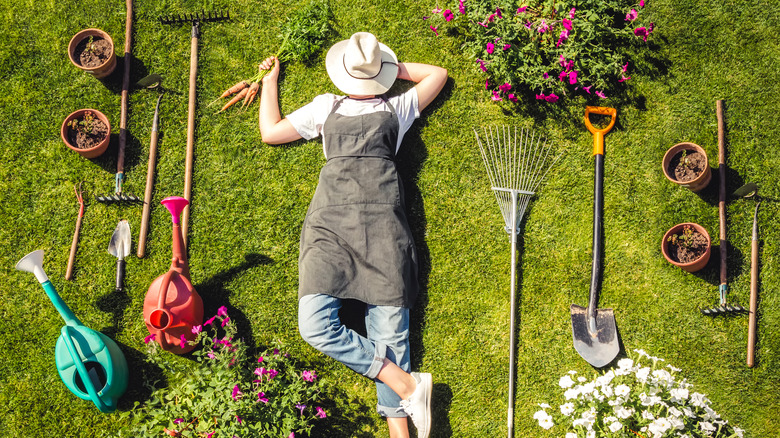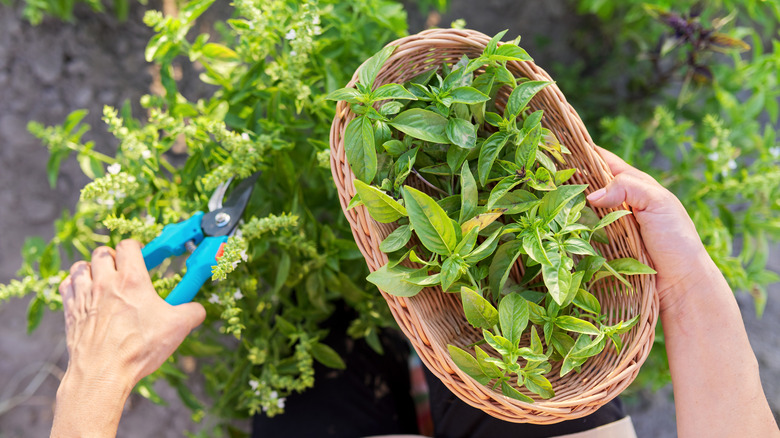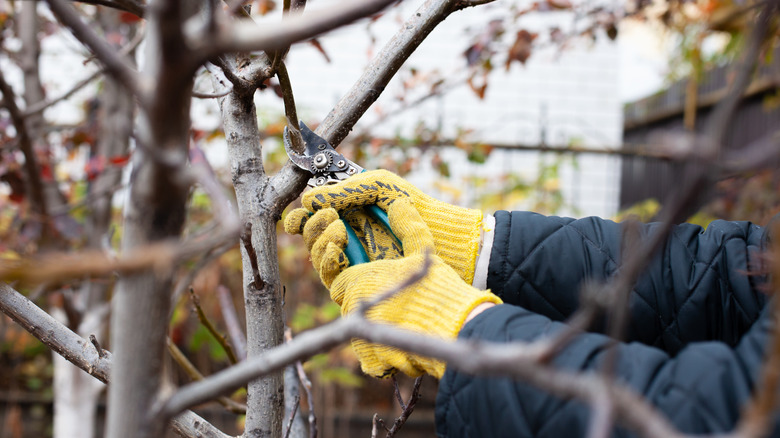How To Clean And Disinfect Your Gardening Tools
Gardeners know how easy it is to get dirty while you are working on your lawn and garden, so it's no surprise that your tools get dirty, too. Although there is plenty of dirt you can see, there are also pathogens that can be detrimental when spread from one plant to another. The University of Minnesota Extension states that some pathogens — organisms that can spread disease — are so microscopic that even a seemingly clean set of garden tools may be infected. This is why it is so important to not only remove dirt and grime from your tools but also disinfect them.
Clean and disinfect your gardening tools a few times a year. If you are using your tools in someone else's garden, like if you are helping your neighbor clean and disinfect your tools before using them in your garden, so you do not accidentally spread pathogens from their space to yours. It is particularly important to disinfect tools if you are dealing with a diseased plant. Sap from an infected tree may carry microscopic organisms that you do not want to spread to other trees on which you use those infected tools. At the end of every gardening season, clean and disinfect all tools before storing them, so they are ready to use at the first sign of spring.
Cleaning
You should do some basic cleaning at the end of each gardening session. Wipe off all soil and ensure there is no dirt build-up before putting them away. According to WD-40, any tool with moving parts and blades requires regular maintenance. In short, pretty much every tool you use needs to be cleaned.
Use a wire brush to remove dirt from metal surfaces. To get the longest life out of your pruners, hedge clippers, and loppers, disassemble them, if possible, before cleaning. Go over rusty spots with sandpaper or steel wool. While they are apart, consider sharpening the blade for the best performance.
For long-handled tools, like shovels, hoes, and forks, as well as hand digging tools, like trowels, scrape stubborn dirt off with a wire brush. Then, use hot soapy water to clean the heads. This water can also be used to clean fiberglass or wooden handles. Before storing tools with wooden handles, use sandpaper to remove rough spots and avoid splintering.
Disinfecting and storage
After your gardening tools are free of all dirt, sap, and other debris, you can disinfect them. The University of Florida suggests using 70% to 100% isopropyl alcohol to sanitize tools. This product is easy to find in any department store and is effective against pathogens. Wear rubber gloves to prevent skin irritation and dampen a cloth with alcohol. Use the cloth to wipe down all areas of your tools that touch plants or soil, including the heads and blades. Alcohol is a safe choice because it evaporates quickly, so it will not cause rust or corrosion on metal.
Once your tools are cleaned and disinfected, it is time to reassemble them and store them properly. Lubricate hinges before reassembling cutting tools, including pruners and loppers. P. Allen Smith suggests storing hand tools in a bucket of oiled sand. Simply combine 5 gallons of construction or play sand in a large container and add about ½ gallon of mineral oil. Sand is available at home improvement stores, while you can find mineral oil at most department stores. To store your tools over the winter, place your tools' blades in the sand, keeping them oiled and protected from moisture in the air. For long-handled tools, spray the heads with vegetable oil for winter storage.


